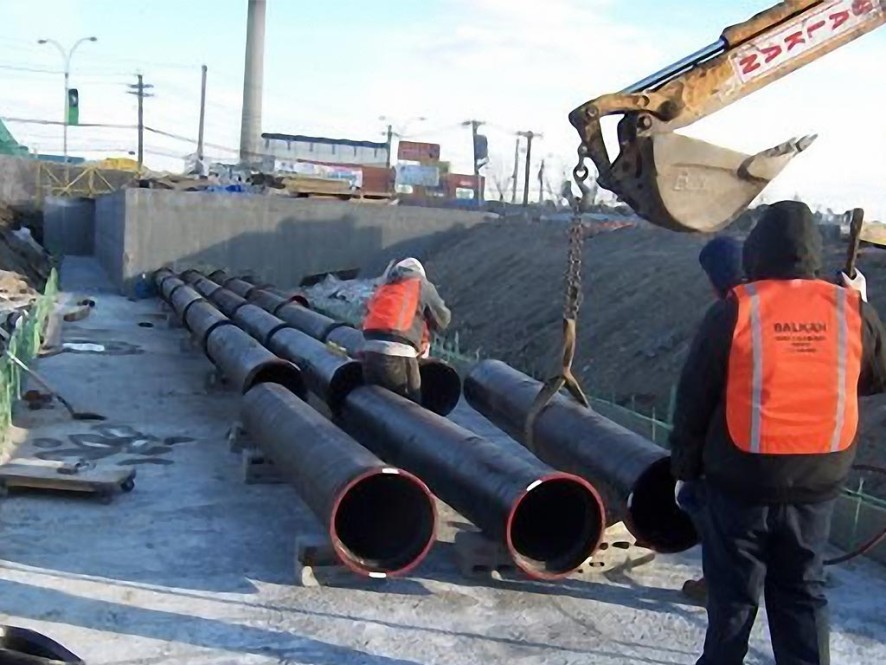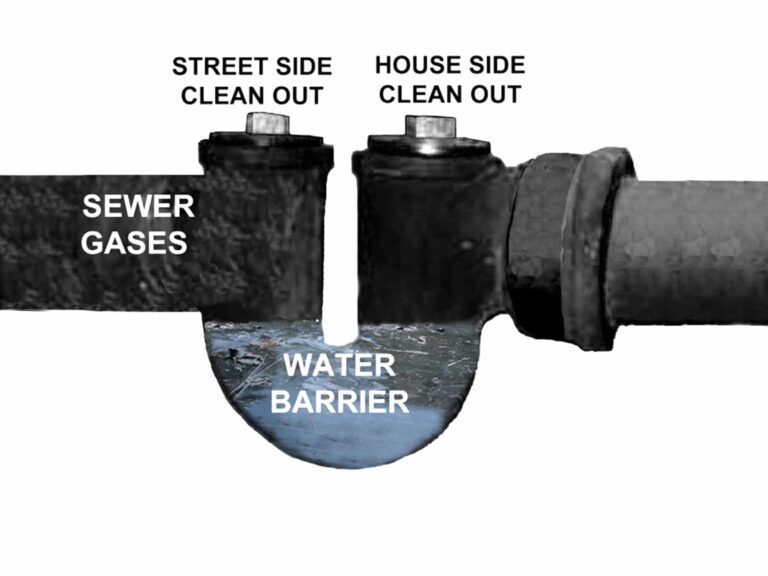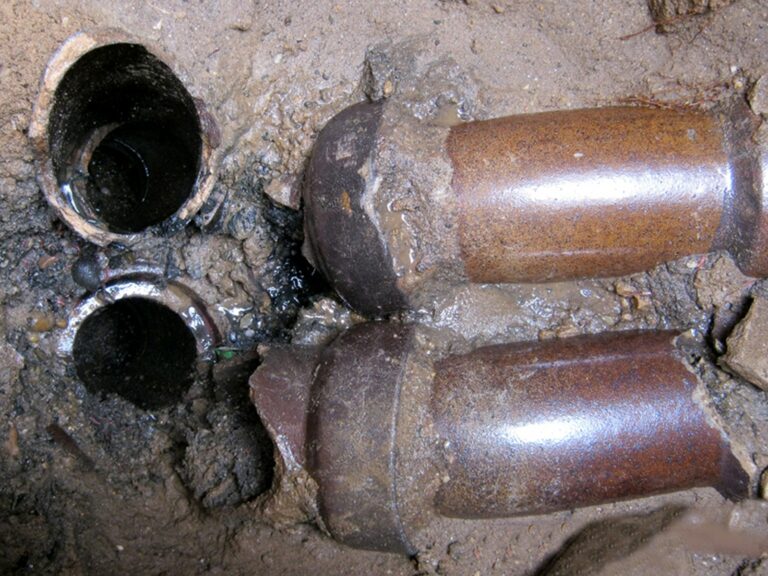Many people seem unsure of what the proper pitch on a sewer line or house drain is. The term slope is also frequently used and has the same meaning as pitch.
If you’ve ever wondered what the minimum slope for water drainage is, it is generally accepted that 1/4″ per foot of pipe run is the minimum for proper pitch on a sewer line. Larger lines such as 8″ pipe actually require less pitch due to the larger circumference of the pipe. But there are other issues concerning pitch to keep in mind.
Pitch on a sewer line for a building or home
Most house sewer lines in Queens, Brooklyn, Bronx, and Staten Island are 6″ unless they are for very large buildings or for large amounts of rainwater disposal. In the cases of a 6″ sewer line the minimum recommended pitch on a sewer line is 1/4″ per foot, or about one foot for a fifty-foot run.
At times field conditions such as utility obstructions or a lack of available pitch do not allow for this. In most of these cases as long as the run of pipe is installed without any dips (back-pitched pipe) the sewer line should still function well without the need for any extensive maintenance.
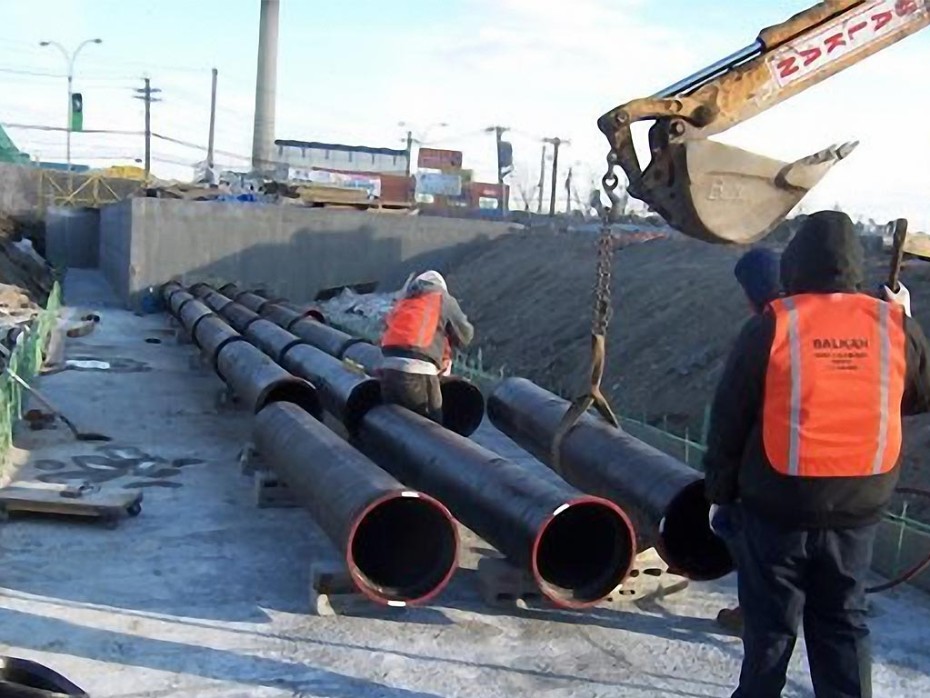
Did you know that there is a maximum slope for sewer pipe? What many people do not realize is that there is a limit on the amount of pitch on a sewer line that is allowed by code. The NYC DEP and NYC Department of Buildings limit the maximum allowable pitch to the equivalent of 1′ for every 4′ of run of pipe.
Limiting the pitch is meant to prevent waste water from running at a very high flow rate as it enters the public sewer. This could interfere with the flow of the public sewer. In some cases, this means that the house drain exiting the building may have to be lowered to lessen the difference in elevations.
In some rare instances, a riser connection has to be built on the public sewer to lessen the amount of pitch. A riser is a vertical connection built on top of a public sewer. Read more about house sewer line connections. A riser connection is fairly costly to build and can add substantially to the cost of a house sewer installation.
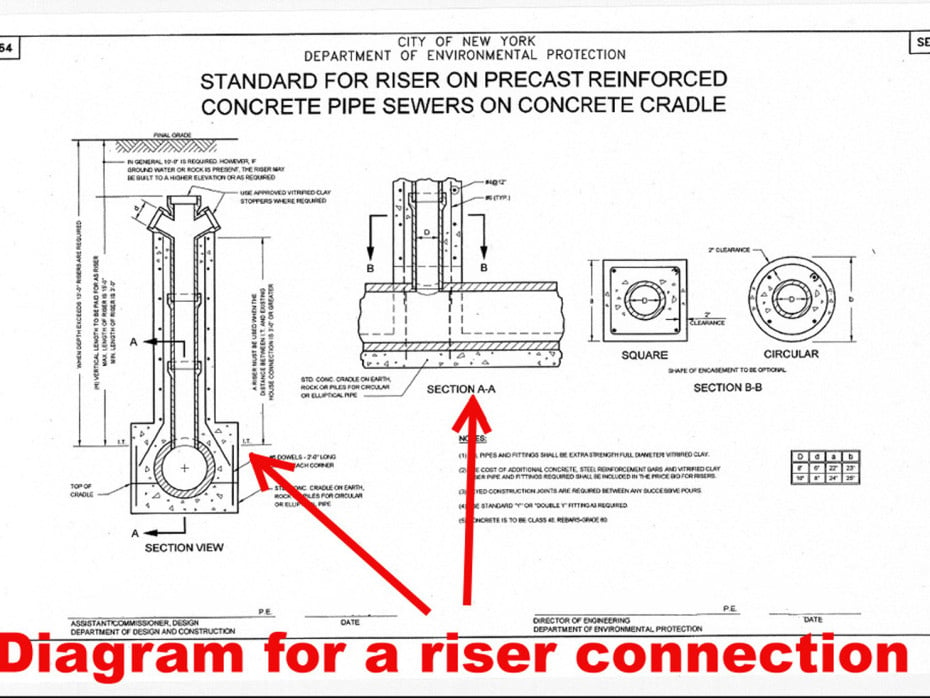
Pitch on a house drain
The proper pitch on a house drain is very similar to the pitch on a sewer line for a home. The general rule is 1/4″ of pitch per foot of run. However, some other issues do come into play. An extreme amount of pitch can cause the wastewater inside the drain to flow extremely fast.
It is possible that when the water runs extremely quickly through the house trap or a trap for an individual plumbing fixture, it can cause the water inside the bottom of the house trap to siphon out and leave the trap dry.
Why is a trap without water in it a big deal?
A sewer trap without and water barrier in the belly of the trap can cause sewer gases to escape into the house. It is advisable to use legal bends to alleviate extreme pitch in the pipe before the wastewater enters a sewer trap. The other and more advisable option is to run the drain line with less pitch to avoid using unnecessary bends. In short, there are cases where too much pitch on a sewer line can cause plumbing problems and issues.
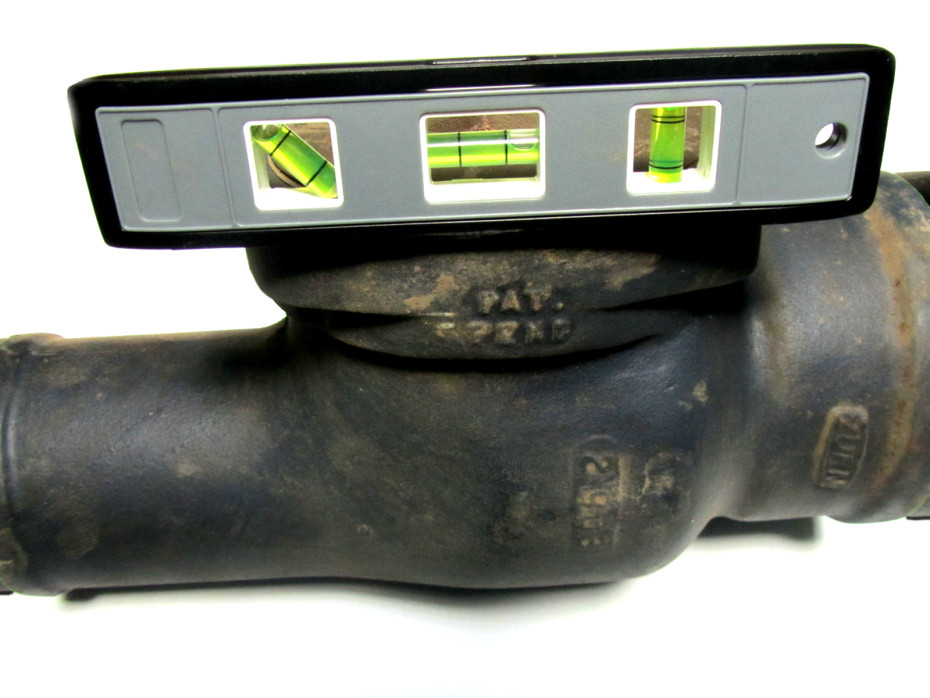
Three other points to keep in mind when installing drain pipes inside a building:
- All plumbing fixtures must be trapped individually so that there is a water seal after the drain outlet of the fixture. Double trapping of any plumbing fixture is not permitted and all traps should be placed as closely as possible to the fixture.
- The maximum vertical distance a drain line can run from a plumbing fixture before the trap is 48″. If a greater length of pipe is installed the force of the waste water would cause the water inside the trap to run out and remove the water barrier. A trap without a water barrier allows for sewer gas or other unpleasant odors to enter the building.
- The maximum horizontal length of pipe that can be installed from a plumbing fixture until the trap is installed is 24″.
Sewer and drain installations
Everyone loves to save some money and even do it by doing some of the work themselves. However, keep the following points in mind. Sewer lines and plumbing drains are meant to last longer than most people do! Installed properly they are virtually maintenance-free and work without the use of any mechanical devices. A vital component of a long-lasting drain system is proper pitch on a sewer line for your property.
We give little thought to plumbing systems because they typically operate seamlessly. Yet people continue to think that a little bit of plumbing knowledge makes them capable of installing plumbing systems including sewer and drain systems. The typical result is that work has to be re-done which costs more than doing it correctly the first time. In addition, there are safety and health issues during such an installation and like repercussions afterward.
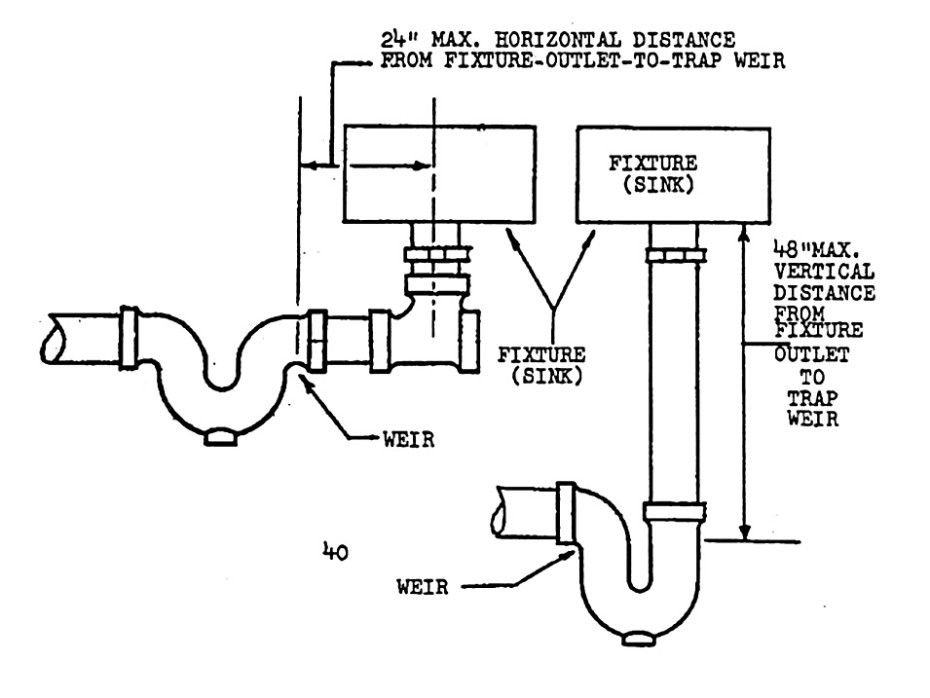
Having a plumbing system that does not function properly or allows sewer gas or other noxious fumes to escape into our homes surely is not worth any potential savings. Our informative posts are meant not as a how-to guide, but as helpful tools to understand basic plumbing principles.
Licensed and insured plumbing professionals performing the work is mandatory for a long-lasting plumbing installation that also meets code requirements.

